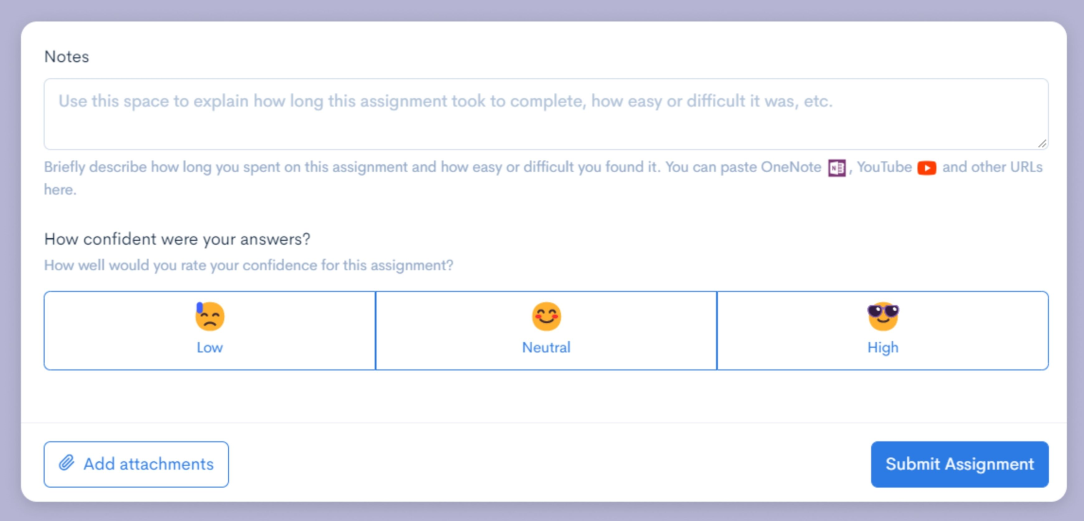Student submission and unique insights
Research strongly suggests that student confidence is a major predictor of their engagement with feedback. There are two key points that a teacher should be aware of.
Firstly, when confidence is high, students are less likely to engage with feedback. Not engaging feedback is fine where a student's answer is correct. But what about when they need feedback? When students need feedback, teachers must be aware of a student's confidence so they can intervene and ensure students engage with the feedback.
Secondly, when student confidence is low, they're more likely to engage with feedback. This likelihood to engage presents a unique opportunity whereby a student submits good work but is low in confidence. With this opportunity teachers can target this student for praise and feedback to ensure their confidence increases.
As students submit their assignment, Nurture asks them to select an emoji to represent their confidence level with their submission: low, neutral, and high.
This quick video demonstrates how student confidence is captured.
Nine out of ten students who use Nurture have reported an increase in their confidence, demonstrating the importance of capturing and acting on student confidence.

Student submission types
Students have a range of submission types—submitting a Class Notebook link to their work, uploading a PowerPoint presentation, or even recording an audio or video piece. Here are examples of what students have submitted:
- Audio recordings for oral language subjects
- Video clips of short media presentations
- Images of artwork created
- Direct links to Class Notebook
- Examination materials as part of drafting in continuous assessments
- and much more